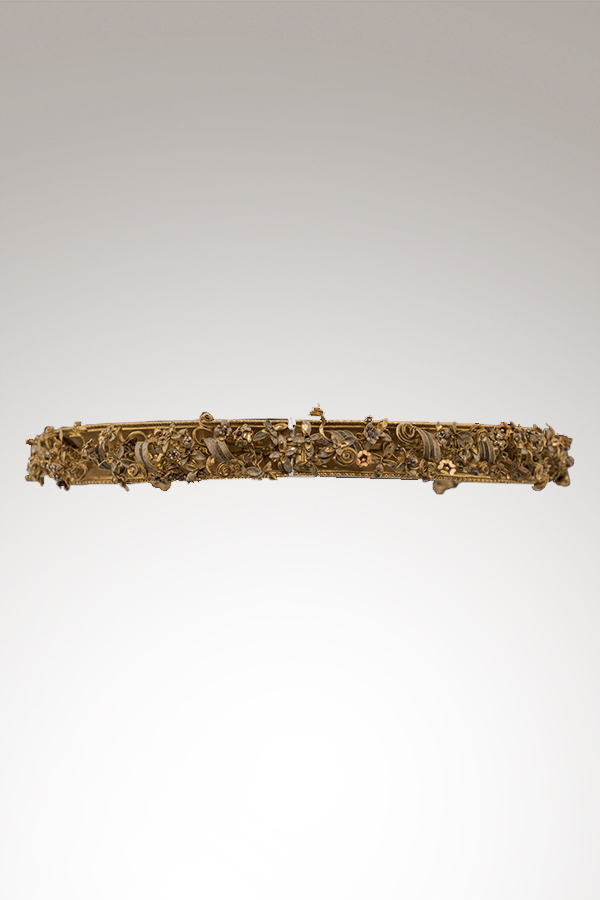Tiara from the Tomb of the Gold Jewellery of Canosa
Canosa di Puglia (BAT), Tomb of the Gold Jewellery | Late 3rd century B.C.
A masterpiece of the goldsmith craftsmanship that flourished in Taranto in the Hellenistic period when gold jewellery was in high demand by a clientele that was not only Greek, the tiara is truly unique, composed of separate elements that could have been assembled together only with the skills of an engineer. The support consists of two gold foils folded to form a channel, joined by a hinge and enveloped by a refined floral openwork composition, with little bouquets of flowers, berries and leaves of various types held together by a running ribbon embellished with enamels of different shades of green, imitating a garland. Each element, which is partially mobile, is fixed to the support by means of small rings, while the colour enamels and semi-precious stones (garnets, carnelians) enhance the natural effect of the decoration.
The tiara was tied behind the nape of the neck by means of a fabric ribbon, as indicated by the eyelets at the ends of the lamina, with enamelled oak leaves emerging from the hollow of the lamina.
 ROOM XII – showcase 21, 1.1
ROOM XII – showcase 21, 1.1






